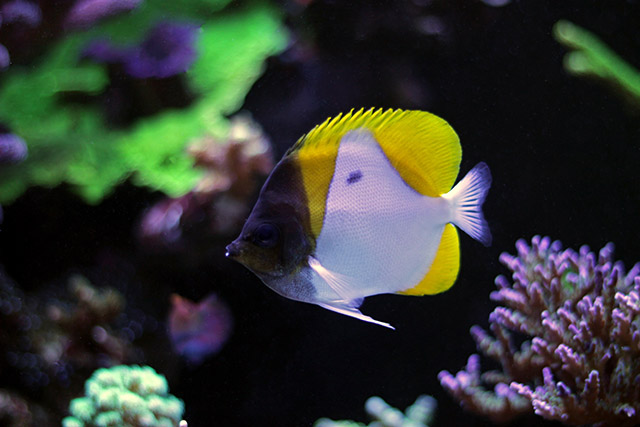
Just like humans, fish sometimes get ill. There are all sorts of diseases that can affect the inhabitants of your marine aquarium, and some are more dangerous than others.
In today's blog post, we're going to look at some of the most common marine fish diseases and the tell-tale symptoms that give them away. When it comes to treating sick fish, different diseases require different approaches, but remember the old saying: an ounce of prevention is worth a pound of cure. Keeping your tank clean and ensuring that your filter remains in good working order will give your fish the best possible chance of staying healthy and disease-free.
Marine Ich
OTHER NAMES: Cryptocaryon, marine white spot disease
Marine ich (pronounced "ick") is one of the most common diseases among marine fish. It's caused by a protozoan parasite, Cryptocaryon irritans, and it's highly contagious.
Common Symptoms of Marine Ich
- White spots the size of sugar granules
- Cloudy eyes
- Fish scratching itself against rocks and other objects
- Rapid breathing
How to Treat Marine Ich
Copper treatments can be an effective way to combat Cryptocaryon irritans. Where marine white spot disease is present in fish-only tanks, we recommend administering NT Labs Anti Parasite (not suitable for reefs).
Velvet
OTHER NAMES: Marine velvet disease, amyloodiniosis
This is another common marine fish disease that's caused by a single-celled parasite, namely Amyloodinium ocellatum. Marine velvet is very dangerous and may even kill affected fish if you do not act quickly enough.
Common Symptoms of Marine Velvet
- 'Flashing' - erratic, jerky movements
- Fish scratching itself against rocks and other objects
- Laboured breathing
- Inflamed or bloody gills
How to Treat Marine Velvet Disease
As with marine ich, velvet can be treated with copper. Use NT Labs Anti Parasite (suitable for fish-only systems) and be sure follow the instructions closely to avoid overdosing.
Head and Lateral Line Erosion (HLLE)
OTHER NAMES: Hole-in-the-head disease
The common name for HLLE is 'hole in the head', which should give you a pretty good idea of what an affected fish looks like. The cause of this disease has not been decisively identified - further research is needed - but multiple studies have found that activated carbon is a risk factor. The good news is that HLLE is rarely fatal.
Common Symptoms of HLLE
The most recognisable signs of HLLE are the small pits that form on the skin of infected fish, especially around the head and along the lateral line.
How to Treat HLLE
Change the water in your tank frequently, make sure your fish are getting a nutritious diet, and remove all activated carbon from the aquarium.
Fin Rot
Fin rot is exactly what it sounds like: the gradual fraying and destruction of a fish's fin tissue. This condition can be caused by a wide variety of different factors - see list below. Fin tissue can be regenerated, but only if the rot does not reach the base of the fin.
Possible Causes of Fin Rot
- The bacterial infection Pseudomonas fluorescens
- Injuries caused by other fish
- Poor nutrition
- Low water quality
- Fungal infections
How to Treat Fin Rot
In order to treat fin rot, you will first need to identify the underlying cause. Start by changing the water in your tank and checking the filter; you should also ensure that you are providing a nutritious diet for your fish.
Where fin rot is the result of a bacterial or fungal infection, antibiotics or antifungal treatments may be required.
Browse Aquarium Treatments >